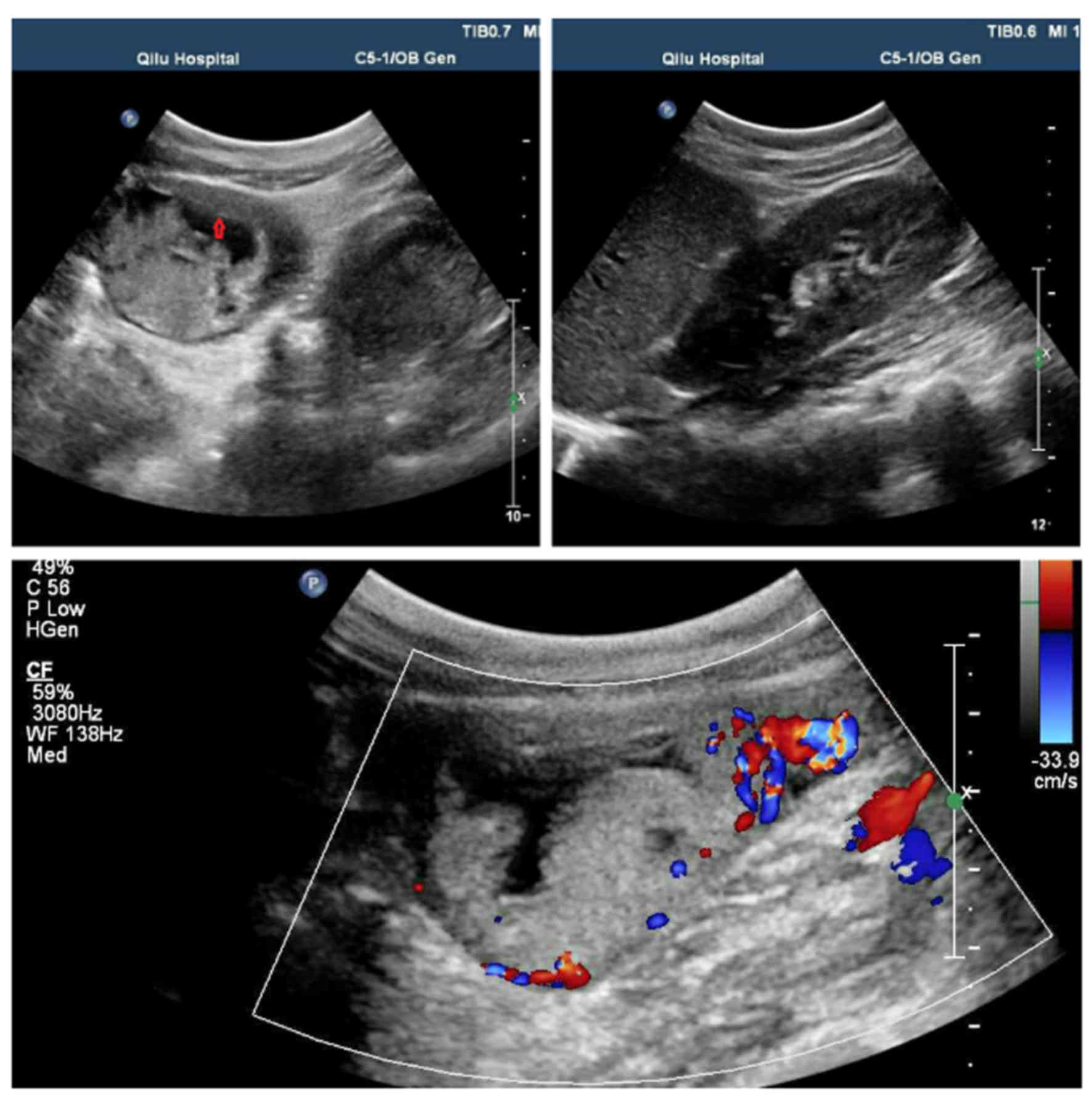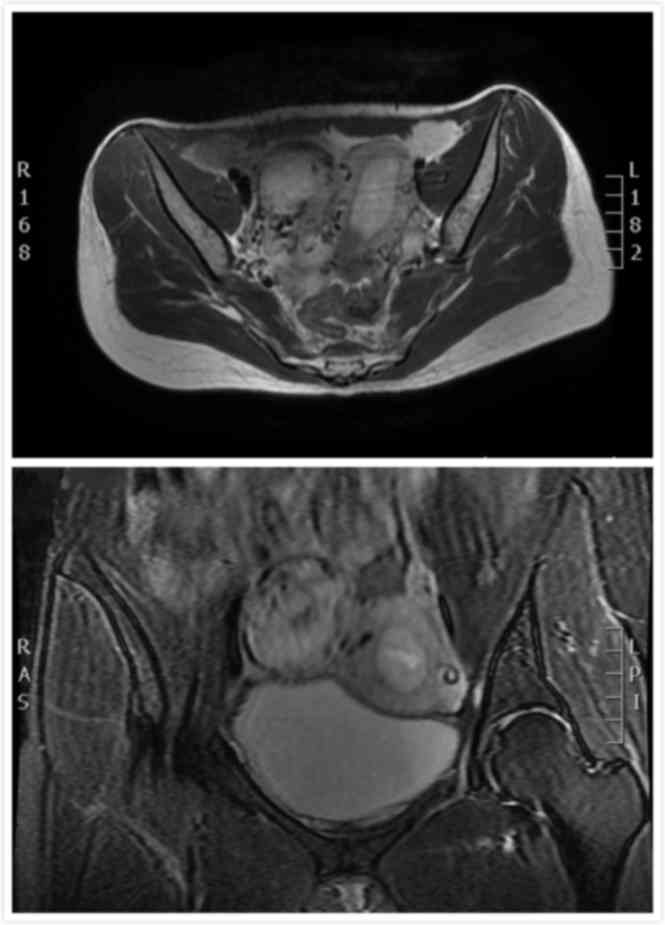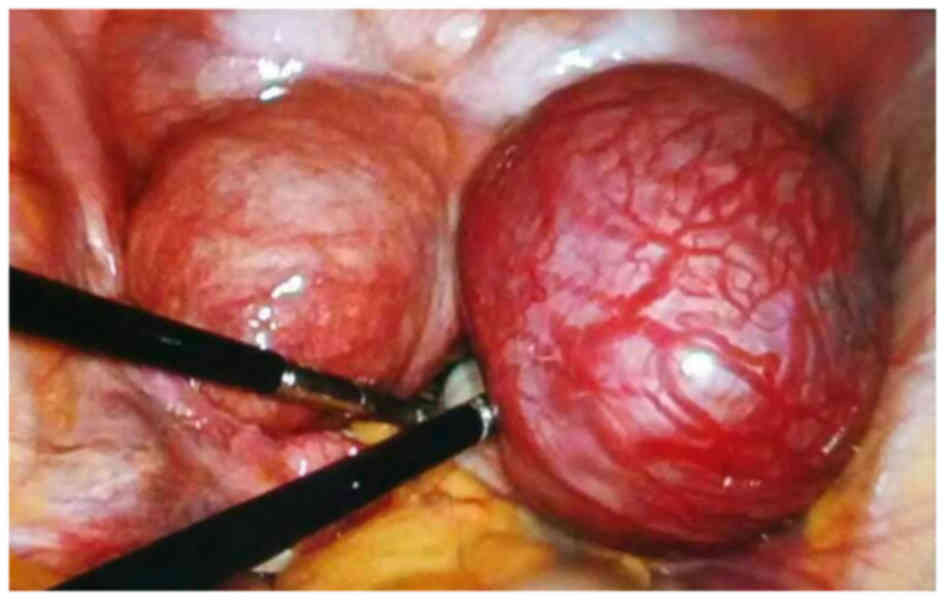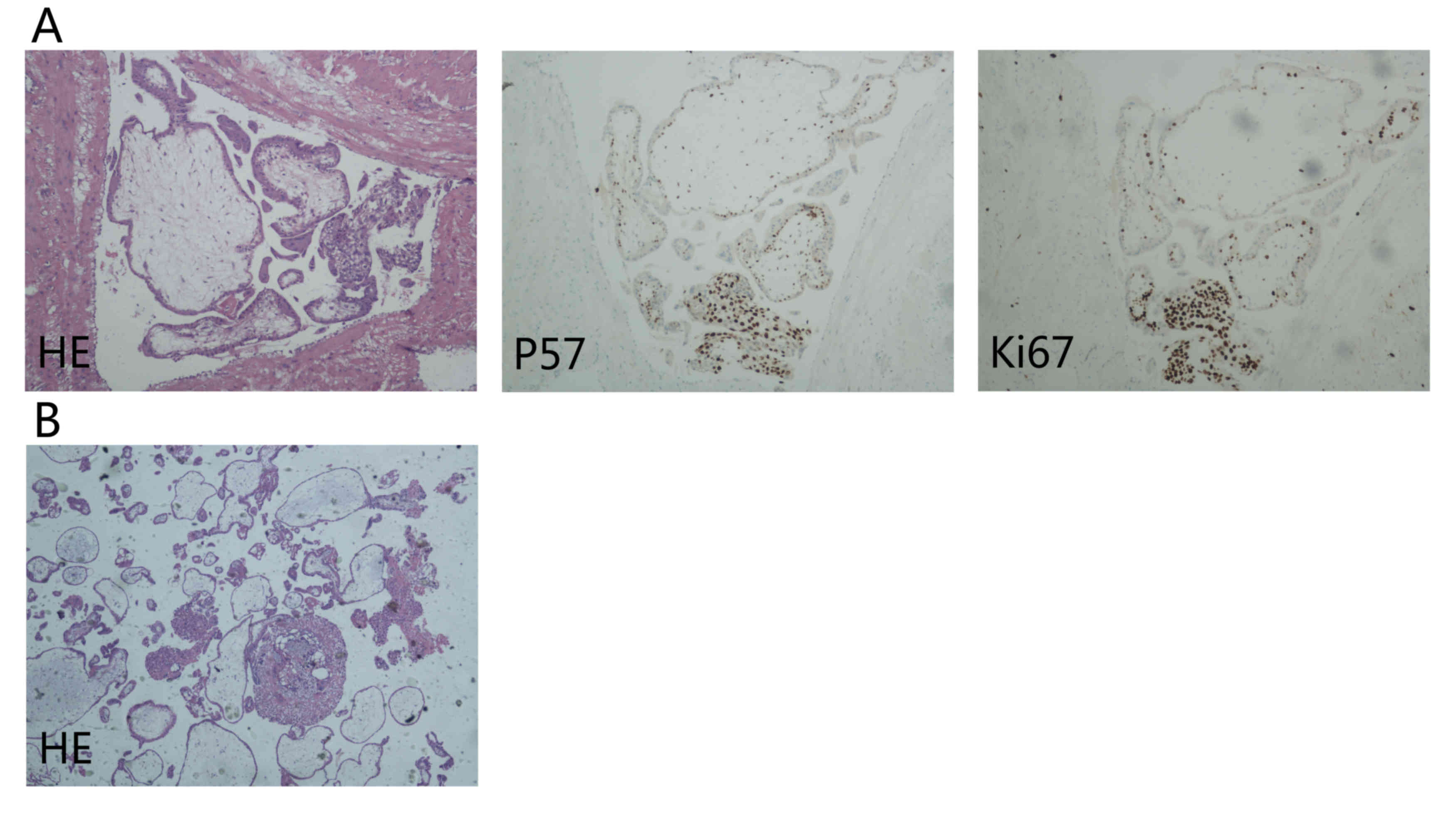|
1
|
Chopra S, Keepanasseril A, Rohilla M,
Bagga R, Kalra J and Jain V: Obstetric morbidity and the diagnostic
dilemma in pregnancy in rudimentary horn: Retrospective analysis.
Arch Gynecol Obstet. 280:907–910. 2009. View Article : Google Scholar : PubMed/NCBI
|
|
2
|
Sevtap HK, Aral AM and Sertac B: An early
diagnosis and successful local medical treatment of a rudimentary
uterine horn pregnancy: A case report. Arch Gynecol Obstet.
275:297–298. 2007. View Article : Google Scholar : PubMed/NCBI
|
|
3
|
Lankford J.C..Mancuso P..Appel R.:
Congenital Reproductive Abnormalities. J Midwifery Womens Health.
2013. View Article : Google Scholar : PubMed/NCBI
|
|
4
|
Gonçalves E, Prata JP, Ferreira S, Abreu
R, Mesquita J, Carvalho A and Pinheiro P: An unexpected near term
pregnancy in a rudimentary uterine horn. Case Rep Obstet Gynecol.
2013:3078282013.PubMed/NCBI
|
|
5
|
The American Fertility Society
classifications of adnexal adhesions, distal tubal occlusion, tubal
occlusion secondary to tubal ligation, tubal pregnancies, mullerian
anomalies and intrauterine adhesions. Fertil Steril. 49:944–955.
1988. View Article : Google Scholar : PubMed/NCBI
|
|
6
|
Pal SK, Purkait D, Modak G and Dawn CS:
Pregnancy in rudimentary horn. J Indian Med Assoc.
81:961983.PubMed/NCBI
|
|
7
|
Pal K, Majumdar S and Mukhopadhyay S:
Rupture of rudimentary uterine horn pregnancy at 37 weeks gestation
with fetal survival. Arch Gynecol Obstet. 274:325–326. 2006.
View Article : Google Scholar : PubMed/NCBI
|
|
8
|
Tsafrir A, Rojansky N, Sela HY, Gomori JM
and Nadjari M: Rudimentary horn pregnancy: First-trimester
prerupture sonographic diagnosis and confirmation by magnetic
resonance imaging. J Ultrasound Med. 24:219–223. 2005. View Article : Google Scholar : PubMed/NCBI
|
|
9
|
Siwatch S, Mehra R, Pandher DK and Huria
A: Rudimentary horn pregnancy: A 10-year experience and review of
literature. Arch Gynecol Obstet. 287:687–695. 2013. View Article : Google Scholar : PubMed/NCBI
|
|
10
|
Nahum GG: Rudimentary uterine horn
pregnancy. The 20th-century worldwide experience of 588 cases. J
Reprod Med. 47:151–163. 2002.PubMed/NCBI
|
|
11
|
Cheng C, Tang W, Zhang L, Luo M, Huang M,
Wu X and Wan G: Unruptured pregnancy in a noncommunicating
rudimentary horn at 37 weeks with a live fetus: A case report. J
Biomed Res. 29:83–86. 2015.PubMed/NCBI
|
|
12
|
Ng TY and Wong LC: Diagnosis and
management of gestational trophoblastic neoplasia. Best Pract Res
Clin Obstet Gynaecol. 17:893–903. 2003. View Article : Google Scholar : PubMed/NCBI
|
|
13
|
Lurain JR: Gestational trophoblastic
disease I: Epidemiology, pathology, clinical presentation and
diagnosis of gestational trophoblastic disease and, management of
hydatidiform mole. Am J Obstet Gynecol. 203:531–539. 2010.
View Article : Google Scholar : PubMed/NCBI
|
|
14
|
Lurain JR and Brewer JI: Invasive mole.
Semin Oncol. 9:174–180. 1982.PubMed/NCBI
|
|
15
|
Ngan HY, Bender H, Benedet JL, Jones H,
Montruccoli GC and Pecorelli S: FIGO Committee on Gynecologic
Oncology: Gestational trophoblastic neoplasia, FIGO staging and
classification. Int J Gynaecol Obstet. 83 Suppl 1:S175–S177. 2003.
View Article : Google Scholar
|
|
16
|
Lurain JR: Gestational trophoblastic
disease II: Classification and management of gestational
trophoblastic neoplasia. Am J Obstet Gynecol. 204:11–18. 2011.
View Article : Google Scholar : PubMed/NCBI
|
|
17
|
Nair K and Al-Khawari H: Invasive mole of
the uterus-a rare case diagnosed by ultrasound: A case report. Med
Ultrason. 16:175–178. 2014. View Article : Google Scholar : PubMed/NCBI
|
|
18
|
van Esch EM, Lashley EE, Berning B and de
Kroon CD: The value of hysteroscopy in the diagnostic approach to a
rudimentary horn pregnancy. BMJ Case Rep. 2010(pii):
bcr08201032292010.PubMed/NCBI
|
|
19
|
Cutner A, Saridogan E, Hart R, Pandya P
and Creighton S: Laparoscopic management of pregnancies occurring
in non-communicating accessory uterine horns. Eur J Obstet Gynecol
Reprod Biol. 113:106–109. 2004. View Article : Google Scholar : PubMed/NCBI
|
|
20
|
Alazzam M, Tidy J, Hancock BW and Osborne
R: First line chemotherapy in low risk gestational trophoblastic
neoplasia. Cochrane Database Syst Rev. 21:CD0071022009.
|
|
21
|
Newlands ES, Mulholland PJ, Holden L,
Seckl MJ and Rustin GJ: Etoposide and cisplatin/etoposide,
methotrexate, and actinomycin D (EMA) chemotherapy for patients
with high-risk gestational trophoblastic tumors refractory to
EMA/cyclophosphamide and vincristine chemotherapy and patients
presenting with metastatic placental site trophoblastic tumors. J
Clin Oncol. 18:854–859. 2000. View Article : Google Scholar : PubMed/NCBI
|
|
22
|
Garrett LA, Garner EI, Feltmate CM,
Goldstein DP and Berkowitz RS: Subsequent pregnancy outcomes in
patients with molar pregnancy and persistent gestational
trophoblastic neoplasia. J Reprod Med. 53:481–486. 2008.PubMed/NCBI
|
|
23
|
Muram D, McAlister MS, Winer-Muram HT and
Smith WC: Asymptomatic rupture of a rudimentary uterine horn.
Obstet Gynecol. 69:486–487. 1987.PubMed/NCBI
|


















